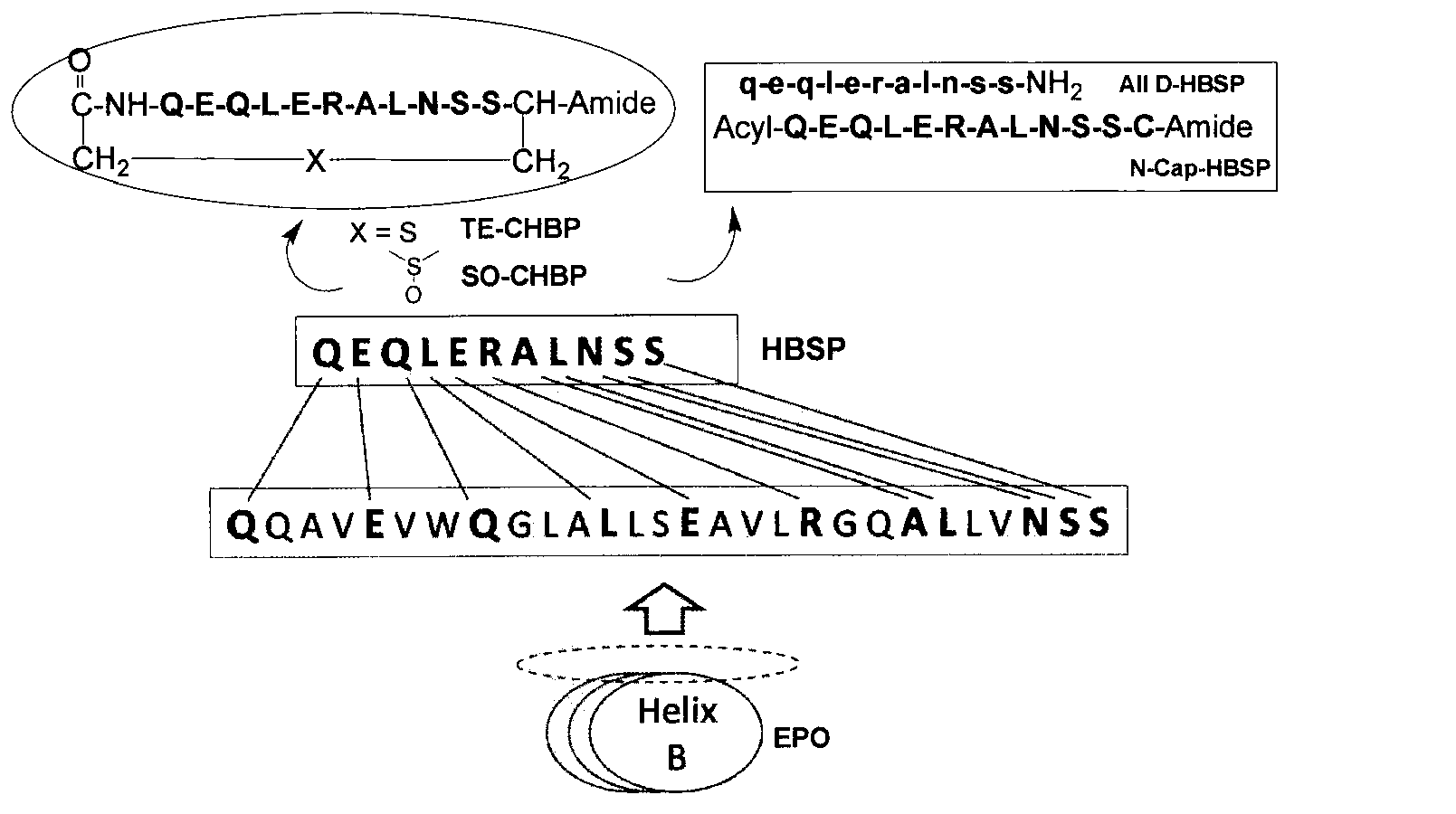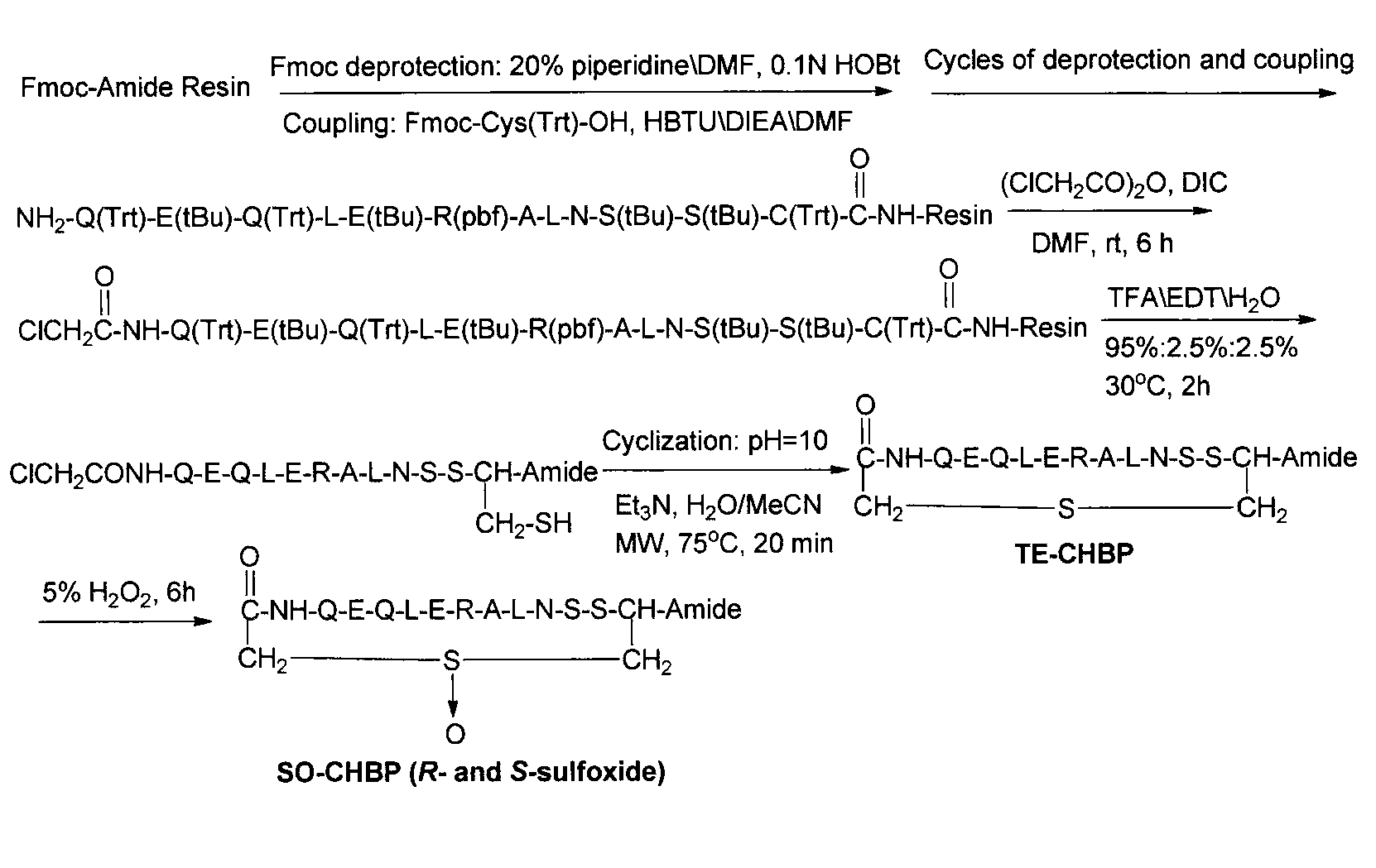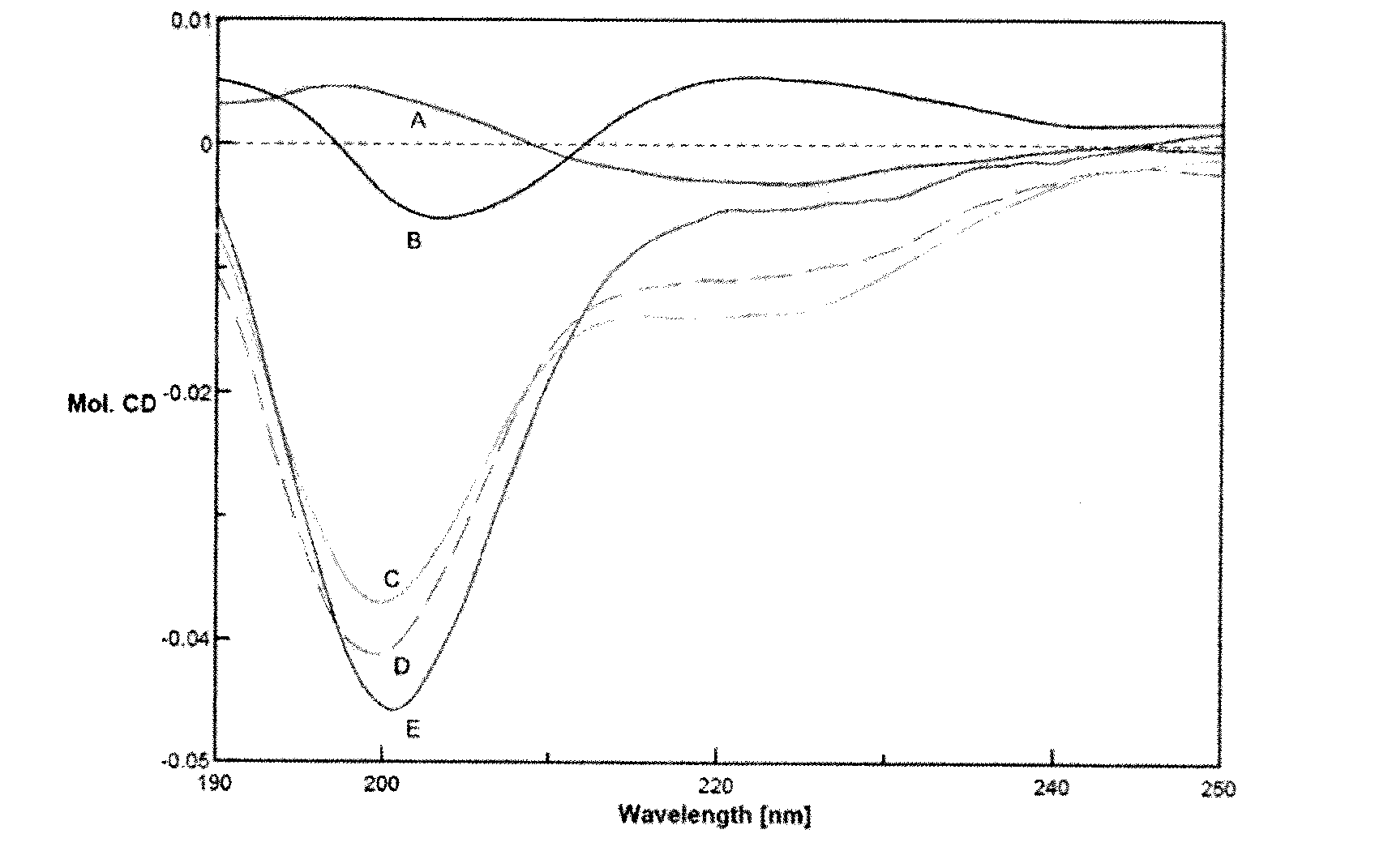Polypeptide having kidney protection effect, and application thereof
A kidney protection and action technology, applied in the field of chemically modified peptides, can solve problems such as limiting clinical application, and achieve the effects of strong scalability, high biological activity and good safety.
- Summary
- Abstract
- Description
- Claims
- Application Information
AI Technical Summary
Problems solved by technology
Method used
Image
Examples
Embodiment 1
[0078] Embodiment 1: Target polypeptide and its preparation:
[0079] 1. Reagents and instruments
[0080] The compound was synthesized using CEM Liberty1 microwave peptide synthesizer and artificial synthesis. The peptide product was separated and purified by reversed-phase high-performance liquid chromatography (RP-HPLC Waters 1525\2489\2707). The structure was identified by mass spectrometry ESI-MS and Finnigan LCQ Deca mass spectrometer assay. The purity of the target compound was all greater than 95%, and the peptide purity analysis was carried out by dual-solvent system high performance liquid chromatography (system 1, solvent composition A: 0.05% TFA aqueous solution, B: 0.05% TFA acetonitrile solution; system 2, solvent composition A: 0.05 % TFA in water, C: 0.05% TFA in methanol). Preparative column model: Vydac C18, 120A (10×250mm); XBridgeTM C18, 5μM, 19×150mm, UV detection at 225nm or 210nm; analytical column model: SunfireTM, C18, 3.5μM, 4.6×150mm, 225nm or 210n...
Embodiment 3
[0125] The plasma half-life measurement of embodiment 3 thioether cyclic peptide and HBSP
[0126] a. Select normal human plasma (from healthy volunteers) containing 0.2 μM and 1 μM concentrations of HBSP and thioethercyclic peptide CHBP, and incubate at 37° C.
[0127] b. After extracting 50ul plasma samples at different time points, add 150ul ethanol to stop the reaction
[0128] e. Using mass spectrometry to detect the content of HBSP and thioether cyclic peptide. Three parallel experiments were set up for this detection.
[0129] Experimental results:
[0130] HBSP was basically degraded after 60 minutes, and its half-life did not exceed 10 minutes, but thioethercyclic peptide still existed in the original form after 5 hours, indicating that it was stable in plasma ( Figure 6 ).
Embodiment 4
[0131] Example 4 Half-life determination of thioether cyclic peptide and HBSP in human liver microsomes
[0132] a. Select 100 μl of HBSP with a concentration of 6 μM and 100 μl of thioether cyclic peptide with a concentration of 6 μM respectively with 100 μl of normal human liver cell suspension (purchased from In Vitro Technologies, Victoria, Australia) (2×10 6 cells / ml) were incubated at 37°C.
[0133] b. After extracting samples at different time points, add 200 μl of acetonitrile to terminate the reaction.
[0134] c. Using mass spectrometry to detect the content of HBSP and thioether cyclic peptide. Three parallel experiments were set up for this detection.
[0135] Experimental results:
[0136] The half-life of HBSP is 96.25 minutes, while that of thioether cyclic peptide is 247.5 minutes, indicating that the metabolism of thioether cyclic peptide by liver cells is significantly slower than that of HBSP ( Figure 7 ).
PUM
 Login to View More
Login to View More Abstract
Description
Claims
Application Information
 Login to View More
Login to View More - R&D
- Intellectual Property
- Life Sciences
- Materials
- Tech Scout
- Unparalleled Data Quality
- Higher Quality Content
- 60% Fewer Hallucinations
Browse by: Latest US Patents, China's latest patents, Technical Efficacy Thesaurus, Application Domain, Technology Topic, Popular Technical Reports.
© 2025 PatSnap. All rights reserved.Legal|Privacy policy|Modern Slavery Act Transparency Statement|Sitemap|About US| Contact US: help@patsnap.com



